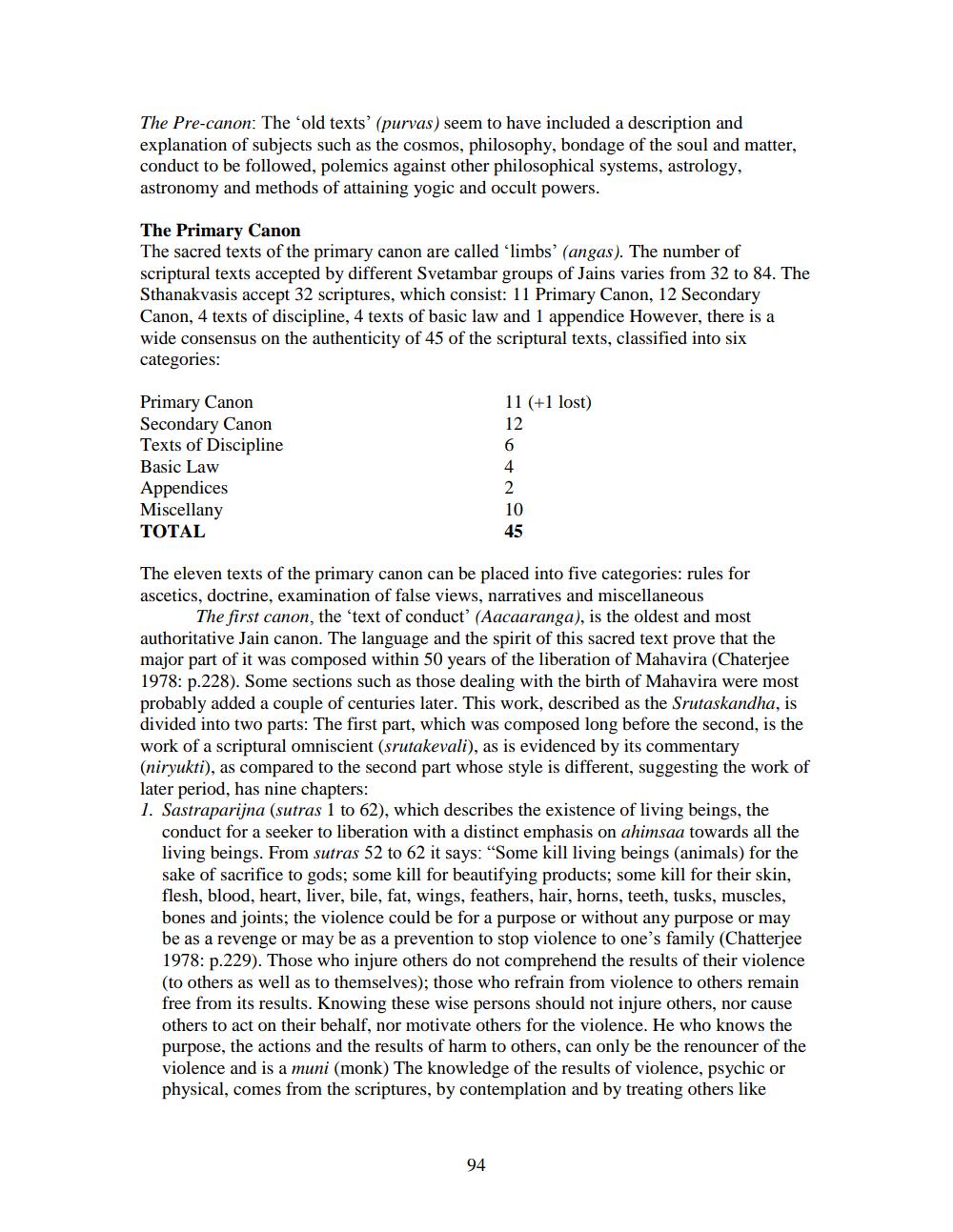________________
The Pre-canon: The old texts' (purvas) seem to have included a description and explanation of subjects such as the cosmos, philosophy, bondage of the soul and matter, conduct to be followed, polemics against other philosophical systems, astrology, astronomy and methods of attaining yogic and occult powers.
The Primary Canon The sacred texts of the primary canon are called 'limbs' (angas). The number of scriptural texts accepted by different Svetambar groups of Jains varies from 32 to 84. The Sthanakvasis accept 32 scriptures, which consist: 11 Primary Canon, 12 Secondary Canon, 4 texts of discipline, 4 texts of basic law and 1 appendice However, there is a wide consensus on the authenticity of 45 of the scriptural texts, classified into six categories:
11 (+1 lost)
Primary Canon Secondary Canon Texts of Discipline Basic Law Appendices Miscellany TOTAL
The eleven texts of the primary canon can be placed into five categories: rules for ascetics, doctrine, examination of false views, narratives and miscellaneous
The first canon, the 'text of conduct' (Aacaaranga), is the oldest and most authoritative Jain canon. The language and the spirit of this sacred text prove that the major part of it was composed within 50 years of the liberation of Mahavira (Chaterjee 1978: p.228). Some sections such as those dealing with the birth of Mahavira were most probably added a couple of centuries later. This work, described as the Srutaskandha, is divided into two parts: The first part, which was composed long before the second, is the work of a scriptural omniscient (srutakevali), as is evidenced by its commentary (niryukti), as compared to the second part whose style is different, suggesting the work of later period, has nine chapters: 1. Sastraparijna (sutras 1 to 62), which describes the existence of living beings, the
conduct for a seeker to liberation with a distinct emphasis on ahimsaa towards all the living beings. From sutras 52 to 62 it says: "Some kill living beings (animals) for the sake of sacrifice to gods; some kill for beautifying products, some kill for their skin, flesh, blood, heart, liver, bile, fat, wings, feathers, hair, horns, teeth, tusks, muscles, bones and joints; the violence could be for a purpose or without any purpose or may be as a revenge or may be as a prevention to stop violence to one's family (Chatterjee 1978: p.229). Those who injure others do not comprehend the results of their violence (to others as well as to themselves); those who refrain from violence to others remain free from its results. Knowing these wise persons should not injure others, nor cause others to act on their behalf, nor motivate others for the violence. He who knows the purpose, the actions and the results of harm to others, can only be the renouncer of the violence and is a muni (monk) The knowledge of the results of violence, psychic or physical, comes from the scriptures, by contemplation and by treating others like
94




